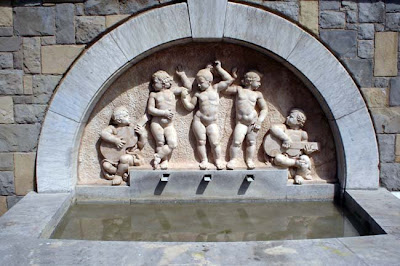Carmen Amaya keeps on dancing
Beyond what today is the Hospital del Mar, began the sandy areas of earth and rubble of Somorrostro, where emigrants and gypsies were raising their huts with planks brought by the waves, bricks recovered from the landfill and a cement of uncertainty. In front of them they had the sea and its storms that, sometimes, snatched everything and took it to the bottom of the sea, and the guitars ended up swimming with the octopuses and sardines. In order to get drinking water, they would come to Barceloneta and fill their jugs from a pipe on the other side of the beach.
In one of those barracks in Somorrostro lived the Amaya family. The father was called El Chino, and he was a guitarist who used to go to all the bars in the lower part of the Ramblas at night to bring home something that wasn’t cold. In that house there was little stew but a lot of music and a lot of clapping. From the seven children that lived there, it was immediately obvious that little Carmen had an airplane propeller on her legs. She danced barefoot on the broken glass with so much ardour that she turned them into diamonds.
“From the seven children that lived there, it was immediately obvious that little Carmen had an airplane propeller on her legs. She danced barefoot on the broken glass with so much ardour that she turned them into diamonds.”

From the age of four, she accompanied her father through the slums so that those feet of hers that moved on the table with a rage of centuries of poverty would move the pockets of the clowns. She had not gone to any dance school, years later she would explain that she learned that wild movement of hers from looking at the sea when it was rough. When she danced the zambra, – barefoot, with her shirt rolled up and tied at the navel, and her long skirt flying – a millenary Muslim culture was flowing through her calligraphy of gestures.
She was immediately signed to dance at the Paralelo and soon Barcelona was too small for her. She went around Spain and immediately knocked down Paris with her heel tapping. She danced so energetically that they had to tighten the nuts of the Eiffel Tower again. She crossed the Atlantic Ocean and conquered Buenos Aires and from there upwards all the Americas. In 1941 even the president of the United States, Roosevelt, sent her a private plane to dance for him, and he never forgot her.
Carmen Amaya was serious, she laughed little, because true artists do not laugh, they know that they will always fail, that there is something that is never achieved, that the divine fish always slips through their fingers. But her feet with the nailed shoes laughed for her.
Maybe she danced so fast because she knew the disease would outrun her legs. She was 41 years old and had not been feeling well for some time. The fire was going out of her. But in 1959, four years before her death, she had the satisfaction of attending the inauguration of a fountain in her honour where many years ago, that pipe in Barceloneta where she used to come to fetch water existed. The priest, because in those days the priests were in mass and ringing, put the cry in the sky of the Christians because the plump angels of the sculpture, two with guitar and three dancing with happiness, were naked. But Carmen Amaya still had the energy to stop him and replied that the angels were naked because that’s how God made them. Flamenca to the end.
The source of Carmen Amaya has lived through many vicissitudes. Like herself. Times of abandonment in which nobody repaired it for months or years after the attack of vandals who blew it to smithereens without knowing who she was or who they were themselves. I approached the fountain one winter morning when it was drizzling, and the neighbourhood was strangely silent. Only the grey pigeons, which are poor birds, have come to drink. If you walk past in a hurry, you can only see a fountain. If you stop to listen and sit on the edge of the basin, the amazing thing happens – you hear the dance. Water gushes out of the three spouts and the clattering of the water against the stone is the zapateado of Carmen Amaya. She is in the water of the fountain.

